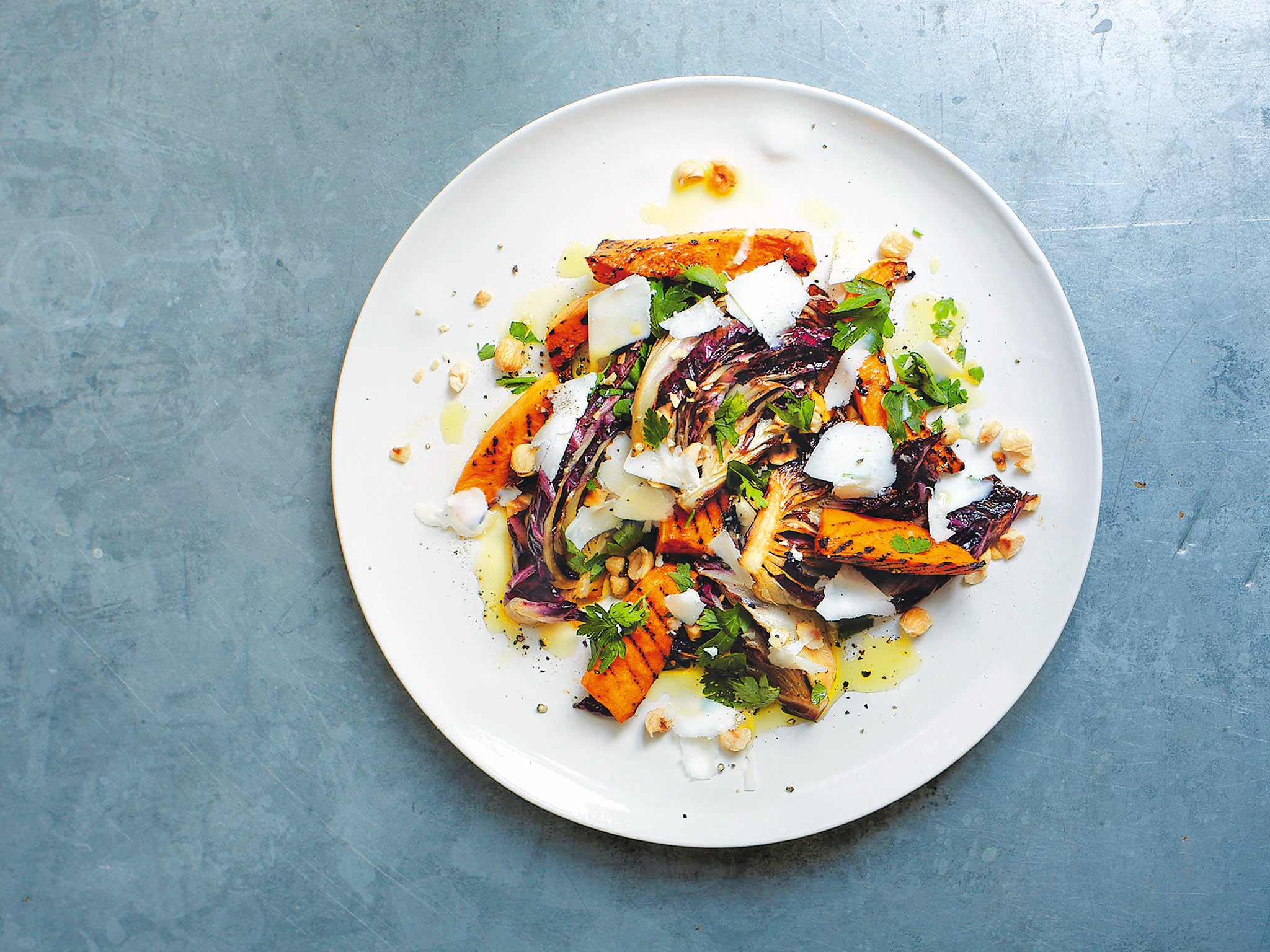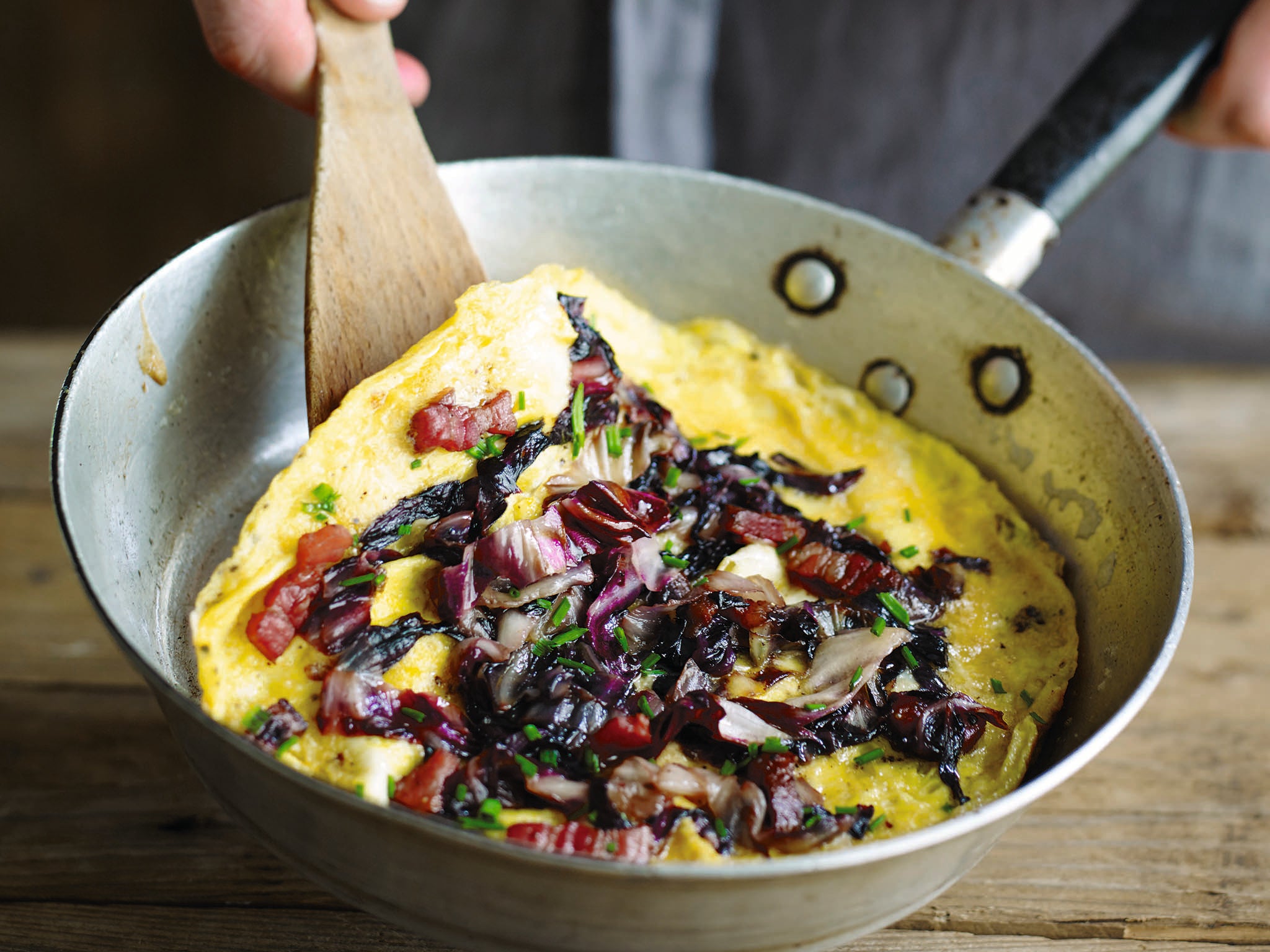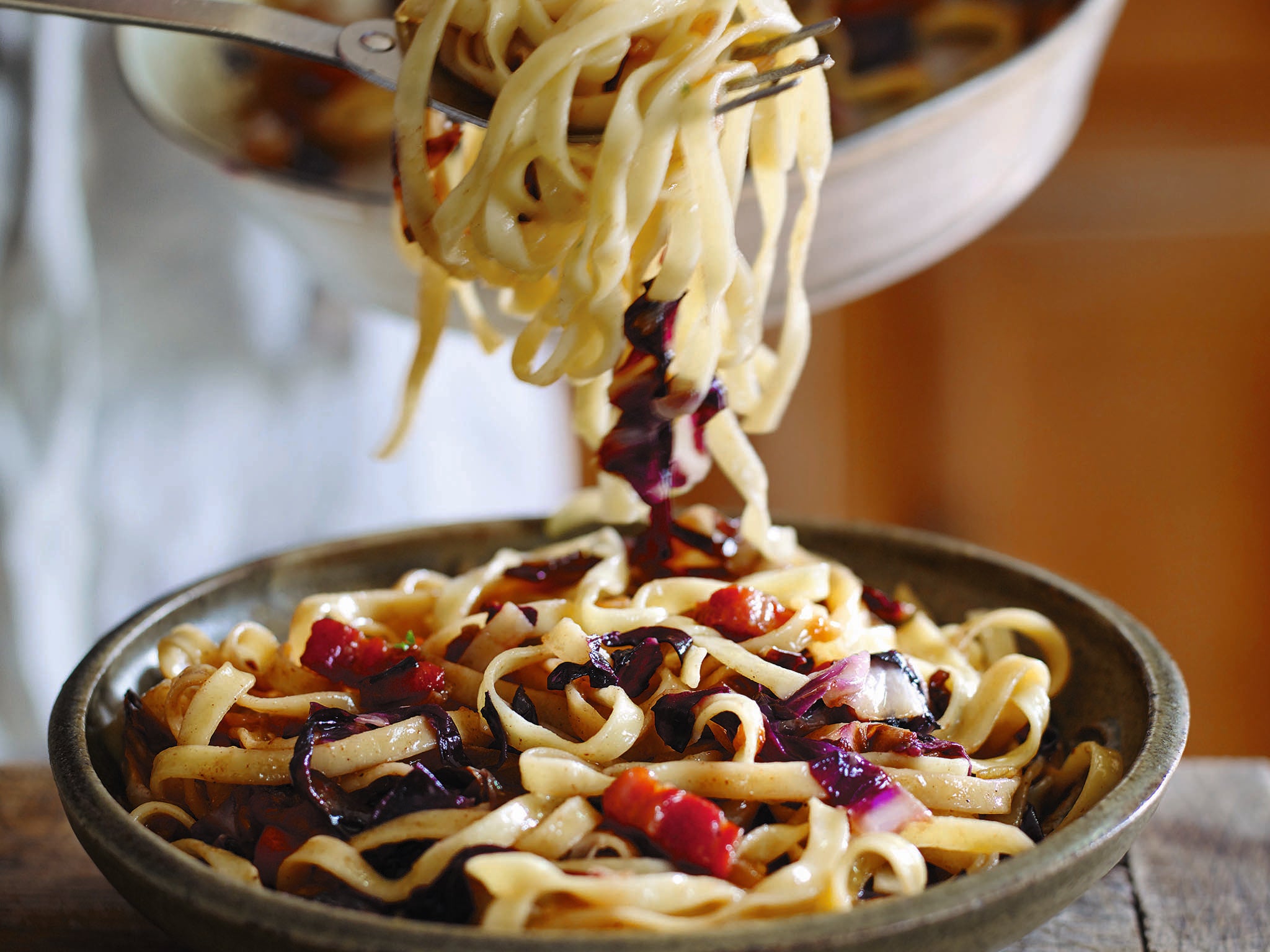How to cook with radicchio in March
Give salads crunch, or pasta dishes colour and a slight bitterness with this beautiful force-grown vegetable

Your support helps us to tell the story
From reproductive rights to climate change to Big Tech, The Independent is on the ground when the story is developing. Whether it's investigating the financials of Elon Musk's pro-Trump PAC or producing our latest documentary, 'The A Word', which shines a light on the American women fighting for reproductive rights, we know how important it is to parse out the facts from the messaging.
At such a critical moment in US history, we need reporters on the ground. Your donation allows us to keep sending journalists to speak to both sides of the story.
The Independent is trusted by Americans across the entire political spectrum. And unlike many other quality news outlets, we choose not to lock Americans out of our reporting and analysis with paywalls. We believe quality journalism should be available to everyone, paid for by those who can afford it.
Your support makes all the difference.This Italian version of chicory looks like a small red cabbage, with big white veins that contrast the purpley redish colour, and owes its hue to the way it's grown.
It's a forced vegetable, and if it's not seen any light then it will have a very dark colour that contrasts the white, but if it's seen more light it wil be a much lighter purple/ red.
The different varieties are named after the regions in Italy they're named after.
Use it in salads with olive oil to make the most of its bitter flavour, or as a side vegetable lightly grilled, where the intensity of the flavour mellows. Keeping with the Italian theme, it's also widely used with risotto and pasta.
You can grow it from seed at home, but it's usually widely available all year round as it can stand a British winter as long sa it's protected against severe frost.
Chargrilled radicchio with squash and goat’s cheese
Serves 4
A beautiful balance of bittersweet griddled radicchio, sweet roasted squash and salty cheese.
2 heads of radicchio
2 tbsp balsamic vinegar, plus extra to serve
about 5 tbsp olive oil
1 large butternut or crown prince squash, peeled and cut into wedges no more than 2cm wide
leaves from a small bunch of flat-leaf parsley, chopped
100g hazelnuts, toasted and roughly chopped
150g hard goat’s cheese
salt and black pepper
Heat a cast-iron griddle pan until really hot. Heat the oven to 190°C/Gas 5. Cut each radicchio head into eight wedges, keeping the root end intact. Put into a shallow bowl and season all over with a few pinches of salt, the balsamic vinegar and a drizzle of olive oil.
Gently rub the radicchio wedges so that all sides are lightly oiled. In batches, lay the squash on the hot griddle and cook for a minute or two on each side until lines appear (you are not trying to cook the squash through, just mark it).
Transfer the squash to a roasting tin and gently toss with salt, pepper and just enough oil to lightly coat. Roast for 20 minutes, or until cooked through. Meanwhile, griddle the radicchio in batches – again just a minute or two on each side to give the wedges colour.
As each piece is done, lay it in the oil and vinegar in the bowl so it can soak up more of the dressing. Add the griddled radicchio to the roasting pan along with the squash for the final 10 minutes of cooking.
Put even amounts of squash and radicchio on to individual plates, sprinkle over the chopped parsley and hazelnuts, then use a vegetable peeler to shave strips of goats’ cheese over the top. Put extra balsamic vinegar on the table for those who’d like more.
Variation: Add a generous handful of winter leaves to turn it into a salad, or some robust cooked grains (pearl barley or spelt) for something a bit more substantial.

Bacon and radicchio omelette
Serves 2
A perfect speedy lunch. You can make one large omelette and split it or two smaller ones to serve.
2 tbsp light olive or other mild oil
6 rashers of smoked streaky bacon, diced
4 large eggs
1 small tightly packed head of radicchio, or half a large head, roughly chopped
a generous knob of butter (about 30g)
1 garlic clove, finely chopped
squeeze of lemon juice
a few snipped chives
salt and black pepper
hot buttered toast, to serve (optional)
Heat a tablespoon of the oil in a frying pan on a medium heat. Add the bacon and fry until it starts to brown. Meanwhile, beat the eggs together using a fork along with a small dash of water and a pinch of salt.
When the bacon has started to brown, turn up the heat and add the radicchio. Keep it moving as it starts to wilt. Add half the butter and the garlic and cook for a further 2–3 minutes, making sure the garlic doesn’t burn. Season with salt, pepper and a squeeze of lemon juice.
Set aside and keep warm. Wipe the pan clean and heat the remaining tablespoon of oil and the other half of the butter over a medium heat until hot and foaming.
Add the beaten egg, swirl quickly with a fork and let it settle into the pan. Cook your omelette to your liking; the egg continues to cook with residual heat so slightly underdone is good. Spread the radicchio and bacon mix across the omelette, scatter over some chives and fold the omelette in half. Eat with hot buttered toast, if you like.

Radicchio and bacon pasta
Serves 4-5
Sweet onions, salty Parmesan, crisp, smoky bacon and a little cream temper radicchio’s pleasant bitterness. If you are particularly fond of its sharpness, use two heads rather than one. To save time, you could also omit the onion, adding a little garlic with the bacon instead.
1 large onion, finely diced
1–2 tbsp olive oil
400 long pasta (linguine, spaghetti, fettuccine and pappardelle work well)
25g butter
250g smoked streaky bacon or pancetta, rind removed and cut into thin strips
1 head of radicchio (about 150g), shredded
50–100ml cream
juice of 1 lemon
80–100g Parmesan, finely grated
salt and black pepper
flat-leaf parsley, finely chopped, to serve (optional)
In a heavy-bottomed pan over a medium heat, fry the onion in a tablespoon of the oil and the butter for 10 minutes, or until translucent. Add the bacon to the onion and continue to fry gently until the fat runs and it begins to colour.
Add the radicchio, stir and cook for a minute or so, until collapsed, adding a little more oil if necessary. Meanwhile, cook the pasta according to the packet instructions.
Just before the cooking time of the pasta is up, stir the cream into the radicchio, then add the lemon juice, a little at a time, tasting as you go. Add the Parmesan, season to taste, then toss the sauce with the drained pasta. Scatter over the parsley, if using.
Variation: Add torn sage leaves to the bacon and cook for 2 minutes before adding the radicchio.
* Add blue cheese or fried mushrooms with the cream.
Recipes from Riverford.co.uk
Join our commenting forum
Join thought-provoking conversations, follow other Independent readers and see their replies
Comments